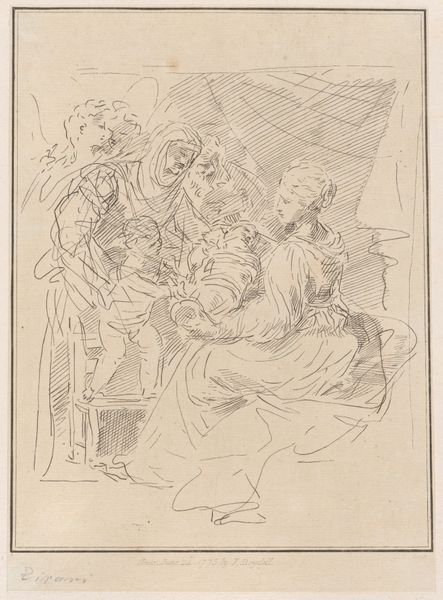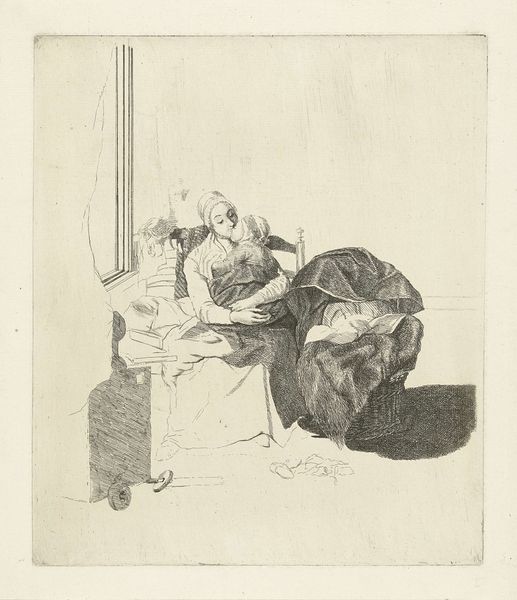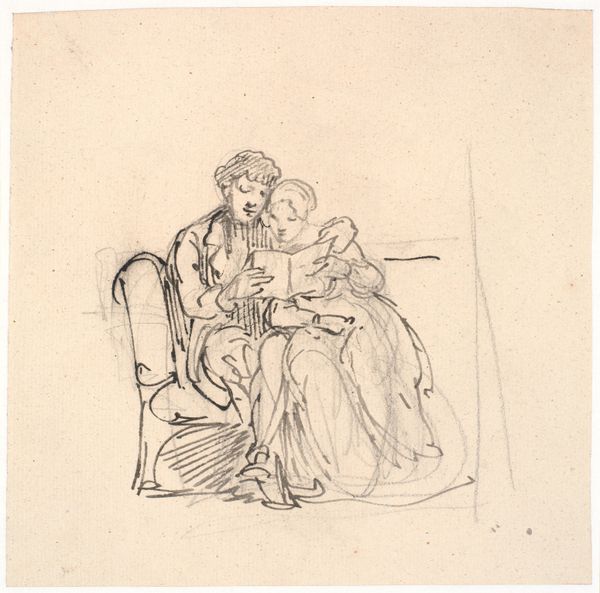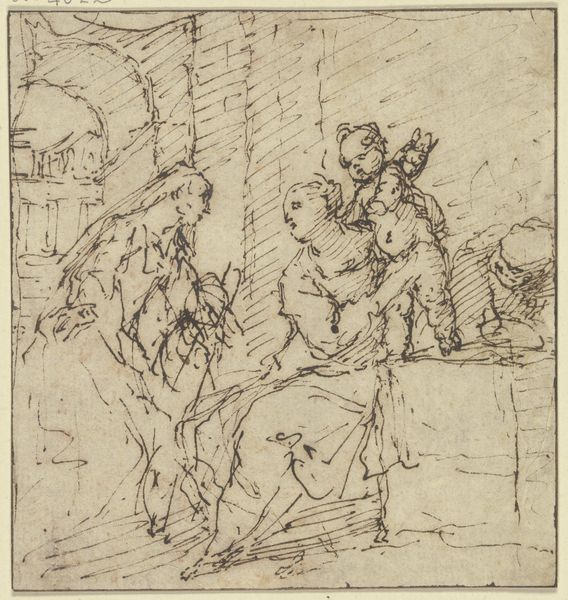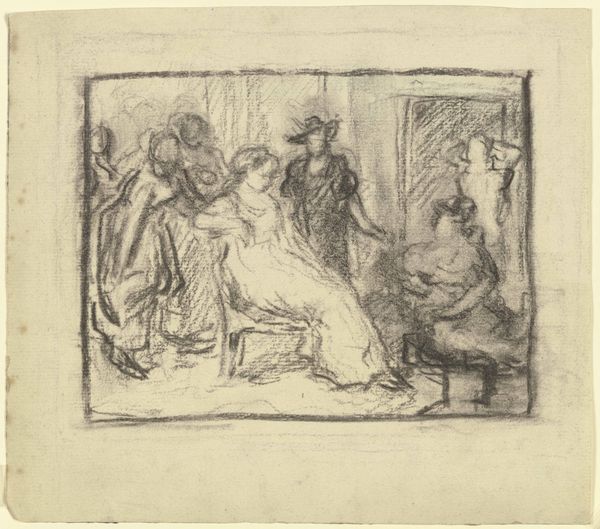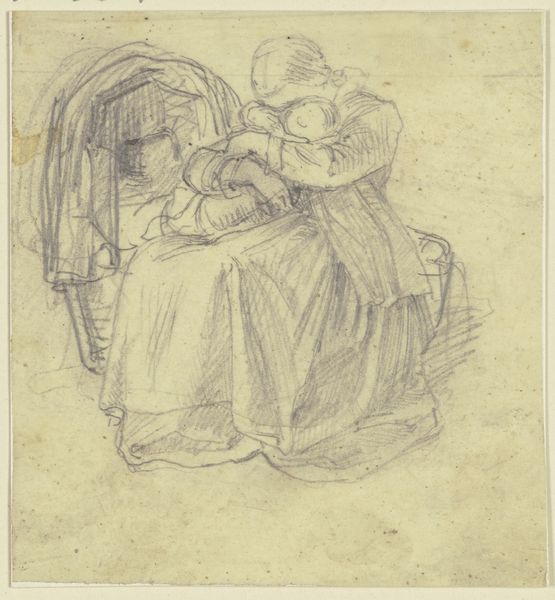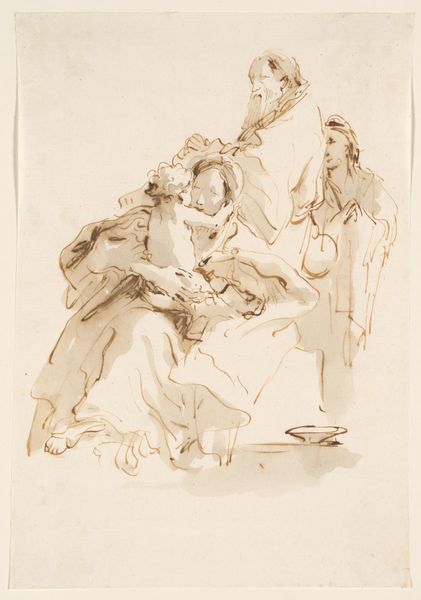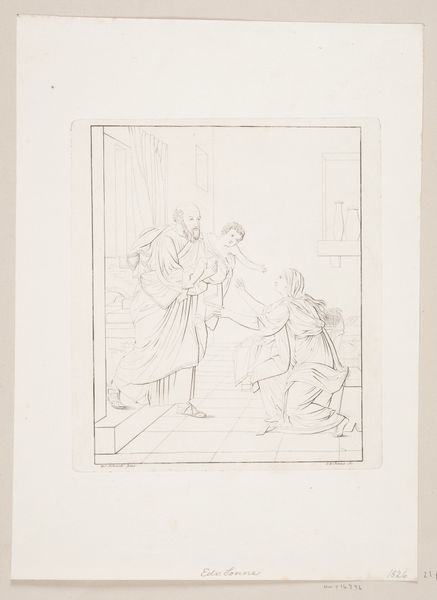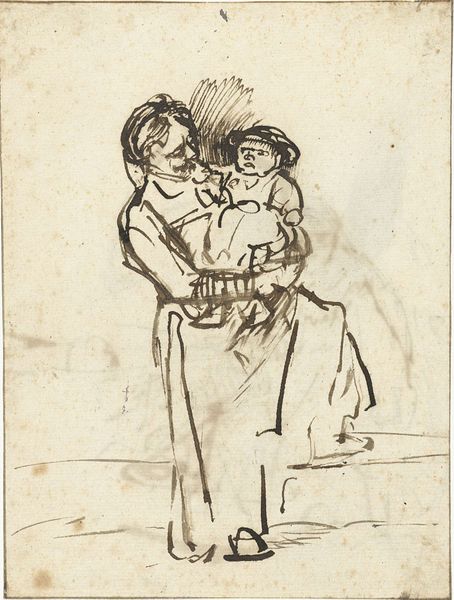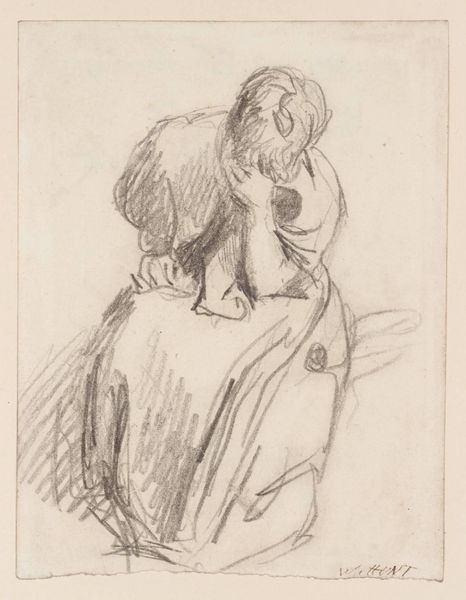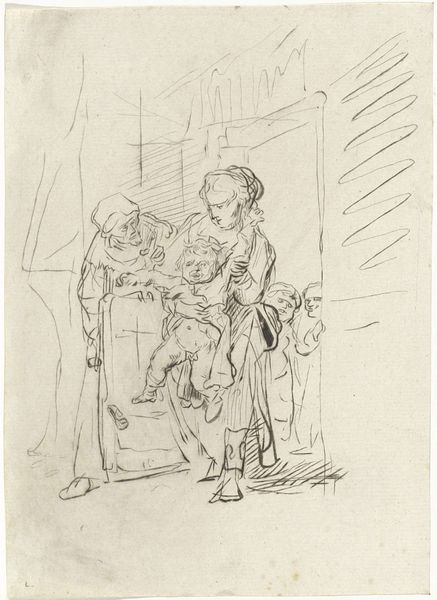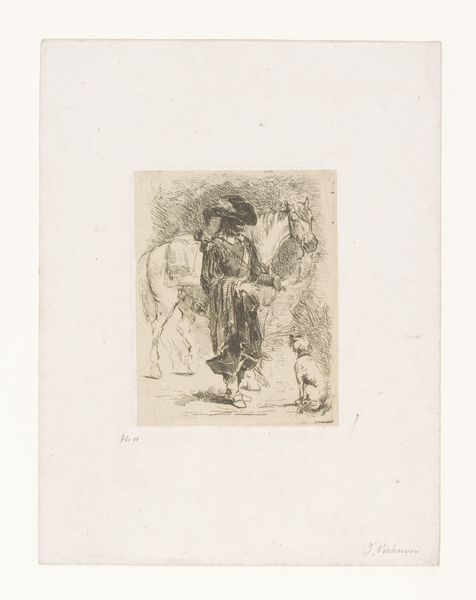
drawing, print, etching
portrait
drawing
baroque
etching
figuration
genre-painting
Dimensions: height 112 mm, width 70 mm
Copyright: Rijks Museum: Open Domain
Curator: Francois Boucher, renowned for his rococo elegance, also produced works like this etching, "Drie boeren," dating from sometime between 1727 and 1755. It's currently held at the Rijksmuseum. Editor: My first impression is how unflattering, and dare I say, satirical, it seems compared to his better-known idyllic paintings. There's something unsettling about how roughly sketched these figures are. Curator: The style, even in its roughness, speaks volumes. Boucher, despite the subject matter, doesn't abandon the baroque sensibilities of dramatic lighting, see how shadow emphasizes the character's folds of skin. There’s a narrative suggested by these types, as well. What story do they embody? Editor: It speaks to the imbalance of power in that era, perhaps. Presenting the working class in such a coarse manner underscores a societal division, reinforcing stereotypes and potentially mocking their condition. Their grouping around what looks like a barrel emphasizes commonness and perhaps something shared in this small encounter. Curator: Symbols tell stories, though. Take the broom. Is it simply a mundane object, or could it represent their labour, their connection to the earth? Everyday objects held spiritual power within them, offering viewers of the period an iconography instantly understood. Editor: Perhaps. But given the context of the time, isn’t it also possible that the inclusion of such details is merely to further distance them from the refined leisure enjoyed by the elite? It feels like reinforcing a visual vocabulary of class distinction. Curator: I agree it can also do both! Art reflects the culture that produced it, its visual lexicon layered with intentional and accidental social meaning, constantly shaped and reshaped in history. Editor: Absolutely. It highlights how complex it can be to analyze art created in times of deep social and economic divides. It allows me to interrogate how even an apparently innocuous genre painting plays into broader societal narratives. Curator: Seeing through these cultural lenses brings me closer to understanding not just the artwork, but myself, the times I am rooted in, and all who came before us. Editor: And hopefully, by exposing the various layers of interpretation, we can encourage further questioning and resistance against the stereotypes present throughout our shared cultural past and potentially inherited by us all.
Comments
No comments
Be the first to comment and join the conversation on the ultimate creative platform.


